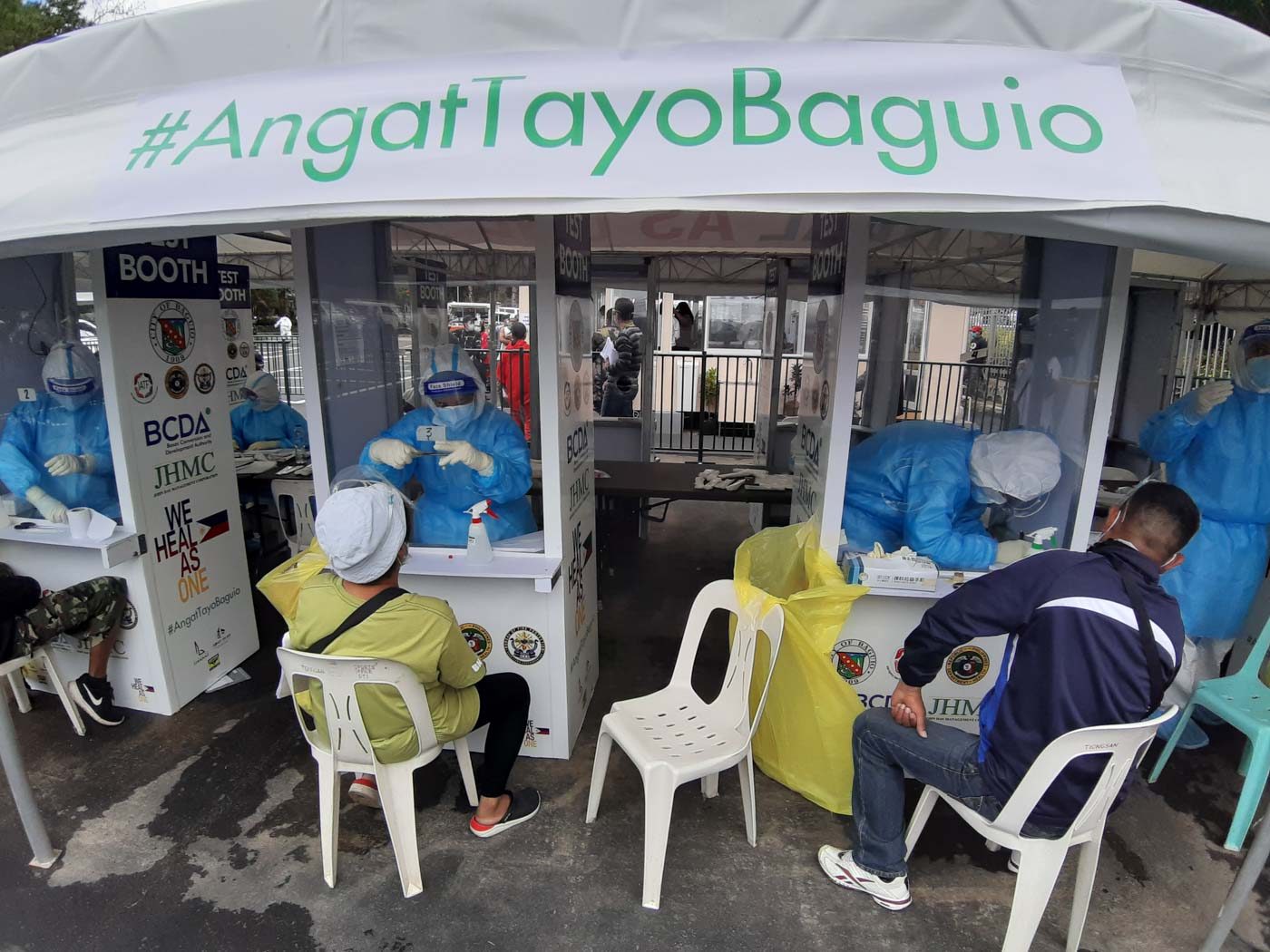SUMMARY
This is AI generated summarization, which may have errors. For context, always refer to the full article.

Researchers studying the coronavirus pandemic in the Philippines recommended that “high-risk” areas be reverted to stricter quarantine measures to curb the spread of the coronavirus.
In its latest report published on Tuesday, October 6, the Octa Research Group identified the following as “high-risk” areas:
- Batangas
- Benguet (including Baguio City)
- Cavite
- Davao del Sur (including Davao City)
- Iloilo (including Iloilo City)
- Laguna
- Misamis Oriental (including Cagayan de Oro)
- Negros Occidental
- Nueva Ecija
- Quezon
- Pangasinan (including Dagupan)
- Rizal
- South Cotabato (including General Santos)
- Surigao del Sur
- Western Samar
- Zamboanga del Sur (including Zamboanga City)
In the Octa Research Group’s list, Batangas and Iloilo City are under general community quarantine (GCQ) until October 31, while the rest are under modified GCQ (MGCQ), the loosest quarantine classification.
The group said that the government should closely monitor these areas and must intensify its efforts on testing, tracing, and isolation to reverse the rise of transmissions.
“It may also consider a stricter quarantine classification in areas with limited hospital capacity and with an increasing number of new cases such as in the provinces of Cagayan and Isabela,” the group said.
Decreasing trend
Meanwhile, the group noted the decreasing trend of COVID-19 cases in the Philippines, adding that the country was able to keep the coronavirus reproduction number – or the number of people that one positive case can infect – below 1.
Experts have repeatedly urged areas to bring their reproduction numbers to lower than 1 for the pandemic to reach manageable levels.
According to the group, the number of cases in the Philippines has been decreasing, and is currently at below 2,500 new cases per day.
The number of cases in coronavirus epicenter Metro Manila has decreased to less than 1,000 new cases per day, with a reproduction number of 0.82.
The group, however, noted that the positivity rate for Metro Manila is still at 8% which is above the World Health Organization (WHO) ideal rate of 5%.
Despite the improvements in the pandemic situation in the country, the group advised the government to remain vigilant.
“We urge the national and the local governments to strictly monitor and enforce compliance with minimum health standards such as physical distancing, the wearing of face mask and face shields and proper hygiene at the community level. We believe that the strict and universal compliance with minimum health standards can lower COVID-19 transmissions in the country,” the group said.
Authorities leading the Philippines’ coronavirus response said that the country has entered “Phase 3” of the government’s plan to address the coronavirus pandemic in October, a phase that will involve allowing more businesses to operate and more people to leave their homes while abiding by health protocols.
As of Thursday, the Philippines still has the highest number of COVID-19 infections in Southeast Asia at 331,869 cases, despite having the longest lockdowns in the world. The coronavirus death toll in the Philippines has exceeded 6,000. – Rappler.com
Add a comment
How does this make you feel?
There are no comments yet. Add your comment to start the conversation.